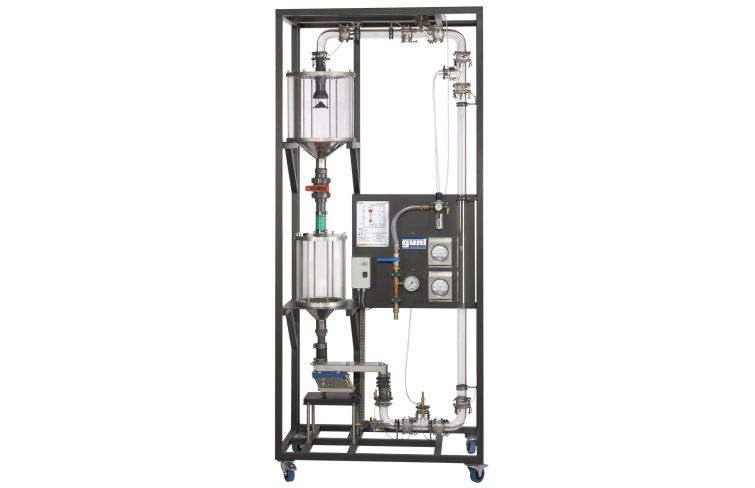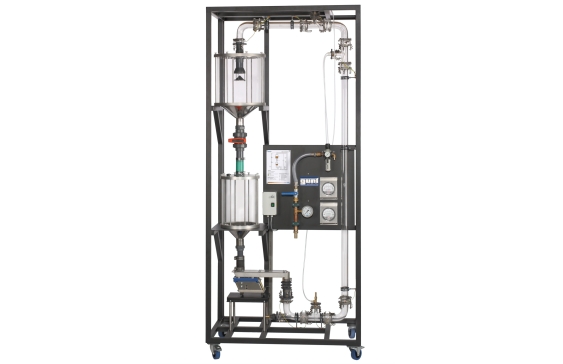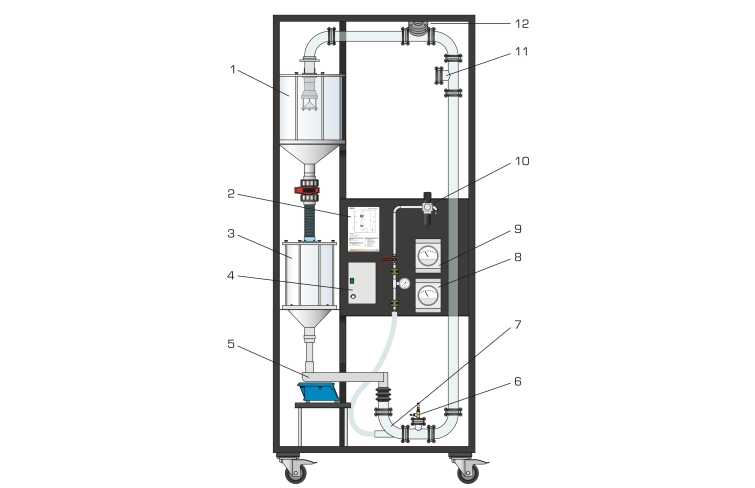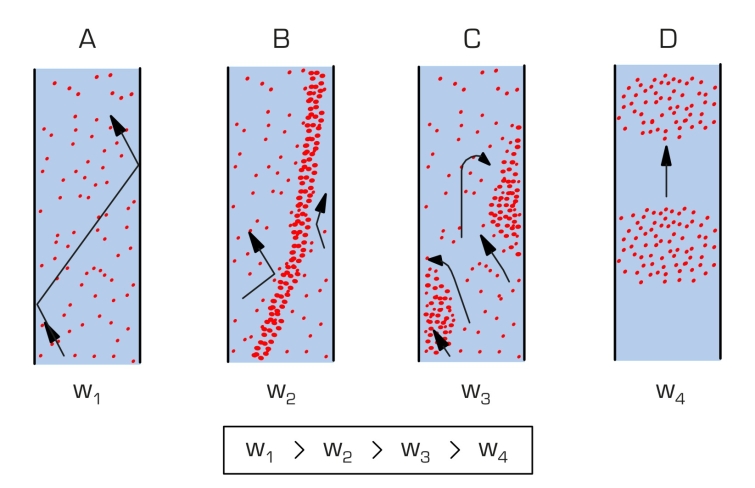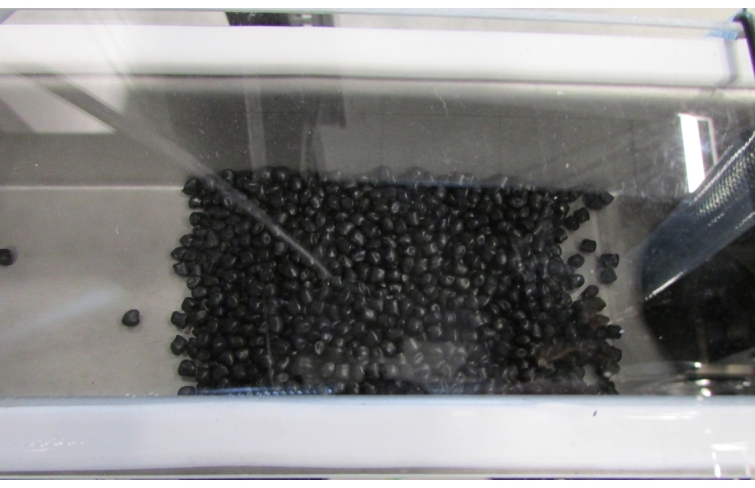Pneumatic conveyors can be used to transport dispersed solids over great distances in pipelines.
The solid is transported out of a feed tank via a vibrating trough into an air flow. An interchangeable injector disperses the solid in the air flow. The air flow transports the solid upwards in the tube. The transport terminates in a collector tank.
Depending on the velocity and solid content of the air flow, different transport states may occur. At high velocities, the solid is dispersed evenly across the cross-section of the tube (dilute phase transport). If the velocity is reduced, strands and balls form on the wall of the tube which then slide down owing to their higher settling velocity. The strands and balls disintegrate again in the air flow and reform. Reducing the velocity to below the settling velocity of the individual particles ultimately results in plug transport. The different transport states can be observed through the transparent tube.
To identify the pressure loss and the flow velocity, measuring points are provided at all relevant positions. The velocity of the air flow is adjusted by a pressure regulator. The solid mass flow can be adjusted by way of the throw of the vibrating trough on a potentiometer. The compressed air has to be provided from the laboratory supply.
Peas or plastic granulate are recommended for use as the solid.



